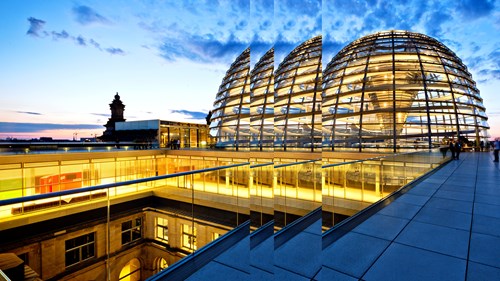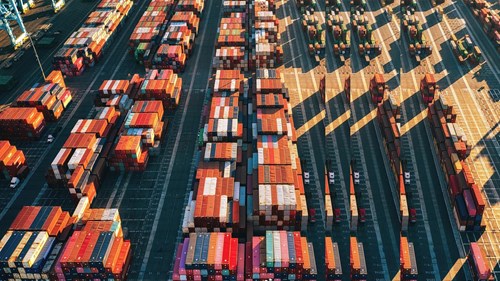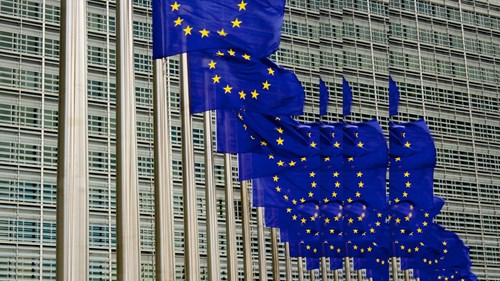Sticking to the plan: The EU’s 16th sanctions package on the third anniversary of Russia’s invasion of Ukraine
Background
In the midst of global political upheaval and uncertainty regarding the future and effectiveness of sanctions following the U.S.’ policy shift toward Russia under the second Trump administration, the Polish presidency of the Council of the EU appears undeterred and stays the course in its sanctions policy towards Russia.
For the third consecutive year, the Council has chosen the anniversary of Russia's invasion of Ukraine as the occasion to introduce a new sanctions package. On February 24, the EU adopted its 16th package of sanctions through Council Regulation (EU) 2025/395 amending Regulation (EU) No 833/2014 and Council Regulation (EU) 2025/390 and Council Implementing Regulation (EU) 2025/389 amending Regulation (EU) No 269/2014.[1]
Simultaneously, the EU introduced new sanctions against Belarus, marking the first time they directly mirror those imposed on Russia. These measures are established through Council Regulation (EU) 2025/392 and Council Implementing Regulation (EU) 2025/386 amending Regulation (EC) No 765/2006.
As anticipated, the 16th sanctions package focuses on tackling sanctions evasion, particularly through the 'shadow fleet,' and brings new trade restrictions, including an import ban on Russian aluminium. Additionally, it enacts sector-specific measures targeting Russia's energy, infrastructure, and financial services sectors. While the new package might seem predictable amid ongoing international political shifts, it is again the result of rigorous and, at times, contentious negotiations among EU Member States.
Controversial negotiations over LNG import restrictions
The journey to the latest sanctions package faced significant hurdles. Many anticipated that the 16th sanctions package would include at least a partial ban on Russian LNG and in December 2024, ten Nordic and Eastern EU Member States reportedly pushed for a partial or total ban on Russian LNG imports. While these countries do not rely on Russian LNG themselves, other Member States, like Spain, France, and Belgium, are heavily dependent on it, and nations such as Germany benefit from the LNG trade with these importing countries. Due to these Member States’ influence, LNG import restrictions were ultimately largely set aside before the final negotiation rounds began. Ultimately, the only agreed-upon measure was a ban on Russian LNG deliveries to EU terminals that are not part of the interconnected natural gas system. This restriction will, however, leave most Russian LNG imports unaffected.
Content of the 16th sanctions package: tackling evasion, restricting trade, and expanding listings
The 16th sanctions package tackles a wide range of different issues and builds on previous sanctions packages. The most important changes regarding the EU’s sanctions regime against Russia include following:
- Anti-circumvention: The new sanctions package again tackles Russia’s 'shadow fleet' which was already in the focus of the 15 th sanctions package. 74 additional vessels have been added to Annex XLII of Regulation (EU) No 833/2014. All listed vessels are banned from EU ports and EU natural and legal persons are prohibited from providing a wide range of services e.g. maritime services as stipulated under Article 3s of Regulation (EU) No 833/2014. Following environmental and maritime safety concerns regarding the 'shadow fleet', the new sanctions package also adds an additional listing criterion for such unsafe vessels.
- Import ban on Russian aluminium: The EU also introduced comprehensive restrictions on the import of Russian primary aluminium. The ban entails a one-year long transition period. During this time, a quota mechanism applies which allows EU economic operators to import overall 270,000 tons of aluminium into the EU – still 80% of EU imports in 2024. Once the transition period concludes, all imports of Russian aluminum are completely banned.
- Expanded export restrictions: The package aims to further restrict exports of dual-use goods and technologies employed by the Russian military in its campaign against Ukraine. This includes items like video gaming equipment and flight simulators used by Russia to support its drone operations on the battlefield. Additionally, chemical precursors for riot control agents, software related to computer numerical control machines, and chromium compounds have been added to the list of sanctioned items, alongside chemicals, minerals, glass, and fireworks.
- Energy measures: New restrictions prohibit EU operators to provide software related to oil and gas exploration and introduces a goods, technology and services ban for crude oil projects in Russia. These measures aim at curbing Russian profits from selling and transporting oil. Furthermore, the package introduced a prohibition to provide temporary storage for Russian crude oil and petroleum products in the EU or to place them under free zone procedures. In the context of these energy measures, the EU also placed significant restrictions on direct and indirect transactions with certain listed ports, locks and airports that have previously been used by Russia to circumvent EU sanctions, in particular the G7 Oil Price Cap.
- Prohibition to supply IP rights to corporate software: The EU further clarifies that the prohibition on selling, supplying, transferring, exporting or providing software for the management of enterprises and software for industrial design and manufacture to legal entities in Russia also extends to the sale, licensing or transfer in any other way of IP rights or trade secrets related of such software.
- Infrastructure measures: The EU's new sanctions package imposes a comprehensive transaction ban on specific Russian infrastructures, including key airports and ports such as Vnukovo and Zhukovsky in Moscow, and the sea ports of Ust-Luga, Primorsk, and Novorossiysk. Constructions services have furthermore been added to the list of prohibited professional services that are prohibited for EU operators.
- Tightening of the road transport prohibition: EU Member States have likewise agreed to amend the road transport prohibition of goods within EU territory in order to close loopholes. Entities that were established in the EU before 8 April 2022 are now prohibited from changing their capital structure to increase the percentage share of any Russian ownership to 25% or more.
- New legal basis to hear claims: The EU’s 14th sanctions package introduced Article 11a and Article 11b of Regulation (EU) No 833/2014 which entitle EU operators to seek compensation before the courts of EU Member States regarding specific damages due to claims lodged by Russian entities against them with courts in third countries or due to decisions issued under certain Russian decrees or legislation. The new sanctions package complements these two provisions by adding a so-called forum necessitates in Article 11d of Regulation (EU) No 833/2014 to exceptionally allow a court of an EU Member State to rule on a claim for damages where EU law or the law of an EU Member State does not establish the jurisdiction of a particular court of an EU Member State.
- New listings: An essential feature of each sanctions package are new listings. The 16th sanctions package adds 48 individuals and 35 entities to the general sanctions list and subjects them to asset freezes. In addition, 53 entities have been made subject to targeted export restrictions on the basis that they support Russia’s military-industrial complex in its war against Ukraine.
As mentioned above, the 16th sanctions package also includes updates in relation to Belarus. In principle, they mirror the changes and additions regarding Russian and align the Belarus sanctions in order to avoid circumvention.
Outlook
The 16th sanctions package again spans a wide array of areas, with numerous updates refining or expanding upon existing measures. Still, these recent changes demand thorough examination and comparison, as the devil is in the details. From a broader perspective, the package appears to send the political message that despite U.S.’ notable shifts in its foreign policy, the EU remains determined to maintain its firm approach toward Russia. While this stance is noteworthy, the effectiveness of the EU's ongoing sanctions policy against both Russia and Belarus is uncertain, especially amid the ongoing U.S. negotiations with Russia.
[1] Further changes were made to specific regimes concerning non-government-controlled areas of Ukraine, as outlined in Council Regulation (EU) 2025/398 and Council Regulation (EU) 2025/401).
Well
informed
Subscribe to our newsletter now to stay up to date on the latest developments.
Subscribe now





